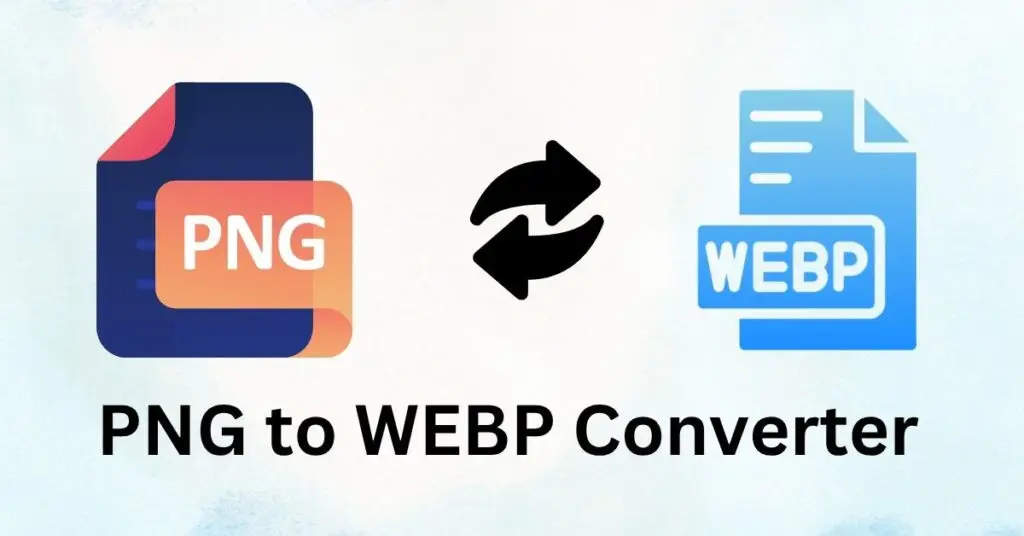Image Format Converters
Free Online Calculators
Build With Wahab: Your Ultimate Hub for Free Online Tools
Are you constantly searching for quick solutions to common digital tasks? Whether you’re a web developer, a designer, a student, or just need a quick calculation, finding reliable, private, and truly free online tools can be a challenge.
Welcome to the Build With Wahab All Tools hub – your one-stop destination for a comprehensive suite of static, client-side, free online tools designed to simplify your workflow. Every tool here is completely free, unlimited, and runs directly in your browser. This means unmatched privacy – your data never leaves your device. Experience blazing-fast performance and an intuitive user experience across all our free online tools.
Explore our categories below and discover how Build With Wahab’s free online tools can empower your digital endeavors.
Image Optimization & Conversion Tools
Effortlessly create favicons, compress images, resize pictures, or convert between various formats. All your essential image editing and optimization free online tools, designed for web performance and visual quality, are available here.
Image Editors & Resizers
- Image Resizer: Quickly change the dimensions of your images for web use or other needs.
- Photo Resizer in KB: Reduce photo file sizes to specific kilobyte targets without losing quality.
- Crop Image: Precisely crop your images to focus on key areas.
- Resize Image to 50KB: Instantly resize your image files to exactly 50KB.
- Resize Image to 100KB: Optimize images to a convenient size of 100KB.
- Resize Image to 20KB: Quickly reduce image files to a lightweight 20KB.
- Reduce Image Size in kb: A general tool to shrink your image files to a target size in kilobytes.
Image Compressors
- Image Compressor: A general-purpose, free online tool to reduce the file size of various image formats.
- Compress image to 50KB: Specifically, compress your images to a target of 50KB.
- Compress image to 20KB: Reduce image file size to a highly optimized 20KB.
- Compress JPEG to 100KB: Optimize your JPEG files to exactly 100KB.
- Compress JPEG to 200KB: Efficiently compress JPEG images to 200KB.
- Compress JPG: A General free online tool for compressing JPG images for web use.
- Compress Image To 10KB: Achieve ultra-small image sizes at 10KB.
- Compress JPEG to 30KB: Target 30KB for your JPEG image compression.
- Compress Image To 1MB: Optimize larger images down to 1MB.
- Compress PNG: Specifically, compress PNG image files for better web performance.
Image Format Converters
- Create a Favicon: Easily generate a favicon for your website from any image.
- PNG To WebP Converter: Transform PNG images to the efficient WebP format for faster websites.
- Convert to JPG: Convert various image formats to JPG.
- PNG to JPG: Convert your PNG files to JPG format.
- JPG to PNG: Convert your JPG files to PNG format.
- HEIC to JPG Converter: Convert high-efficiency HEIC photos to standard JPG.
- HEIC to PNG: Convert HEIC image files to PNG format.
- SVG Converter: A universal free online tool to convert various formats to SVG.
- PNG to SVG: Convert pixel-based PNGs to scalable vector graphics (SVG).
- JPG to SVG: Convert JPG images to scalable vector graphics (SVG).
- JPEG to SVG: Convert JPEG images to scalable vector graphics (SVG).
- WEBP to PNG: Convert WebP images back to PNG format.
- SVG to PNG: Convert scalable vector graphics (SVG) to PNG.
- PNG to ICO: Convert PNG images into ICO format for favicons and icons.
- AVIF to JPG: Convert AVIF images to standard JPG format.
- MB to KB Converter: Convert image sizes from megabytes to kilobytes.
Web Development & Utility Tools
Essential static-free online tools for developers, designers, and anyone working with code or web assets. From minifying code to encoding URLs, streamline your development workflow.
- CSS Minifier: Compress your CSS code to reduce file size and speed up loading.
- HTML Minifier: Optimize your HTML by removing unnecessary characters and spaces.
- JavaScript Minifier: Reduce JavaScript file sizes for faster script execution.
- Code Beautifier (HTML/CSS/JS): Format messy code into a clean, readable structure.
- URL Encoder/Decoder: Safely encode or decode URLs for web parameters.
- Meta Tag Generator: Easily create SEO-friendly meta tags for your website pages.
- Robots.txt Generator: Generate a robots.txt file to guide search engine crawlers.
- .htaccess Generator: Create common .htaccess rules for redirects, security, and caching.
- JSON Formatter/Validator: Beautify and validate your JSON data.
- XML Formatter/Validator: Format and validate XML files for proper structure.
- UUID/GUID Generator: Generate universally unique identifiers.
- Cron Job Generator: Easily create cron job syntax for server-side tasks.
Generator & Scanner Tools
Quickly generate secure passwords, custom QR codes, barcodes, or scan existing ones. Your go-to free online tools for essential daily generation and scanning needs.
- Password Generator: Create strong, random, and secure passwords.
- Password Strength Checker: Test the strength of your passwords for better security.
- Calendar Generator: Generate custom calendars for various needs.
- QR Scanner: Scan QR codes directly in your browser.
- QR Generator: Create custom QR codes for links, text, Wi-Fi, and more.
- Barcode Scanner: Scan various barcode types using your device’s camera.
- Barcode Generator: Create different types of barcodes (e.g., EAN, UPC).
Text & Content Tools
Analyze text, convert cases, or manipulate content with ease. Perfect for writers, marketers, and anyone working with large volumes of text with these free online tools.
- Word Counter: Instantly count words, characters, sentences, and paragraphs in your text.
- Case Converter: Change text between uppercase, lowercase, title case, sentence case, and more.
- Text to Slug Converter: Convert text into SEO-friendly URL slugs.
- Line Counter: Count the number of lines in any text input.
- Random Word Generator: Generate random words for games, ideas, or writing prompts.
- Text to HTML Converter: Convert plain text to HTML paragraphs or breaks.
Binary & Base Converter Tools
Convert between binary, hexadecimal, ASCII, decimal, and other bases effortlessly. Essential free online tools for programmers, students, and IT professionals.
- Text To Binary: Convert plain text into its binary representation.
- Binary to Text: Convert binary code back into readable text.
- Binary to HEX: Convert binary numbers to hexadecimal format.
- Hex to Binary: Convert hexadecimal numbers to binary format.
- Binary to ASCII: Convert binary code to its ASCII character equivalent.
- ASCII to Binary: Convert ASCII characters to their binary representation.
- Binary to Decimal: Convert binary numbers to decimal numbers.
- Decimal to Binary: Convert decimal numbers to binary numbers.
- Text To ASCII: Convert plain text into ASCII values.
- Decimal to HEX: Convert decimal numbers to hexadecimal format.
- Binary Translator: A comprehensive free online tool for various binary conversions.
- English to Binary: Convert English words and sentences to binary code.
- Binary to English: Convert binary code back into English text.
- Binary Decoder: Decode binary strings into readable formats.
- Hex to Text: Convert hexadecimal values back into plain text.
- Ascii to Text: Convert ASCII values back into plain text.
Free Online Calculators
A diverse collection of specialized free online tools to help you with finance, health, academics, and everyday math. Get quick and accurate results for common calculations.
- Age Calculator: Calculate age in years, months, and days.
- Percentage Calculator: Easily find percentages, percentage changes, and more.
- Average Calculator: Calculate the average of a set of numbers.
- Confidence Interval Calculator: Compute confidence intervals for statistical analysis.
- Sales Tax Calculator: Calculate sales tax amounts for purchases.
- Margin Calculator: Determine profit margins for business.
- Probability Calculator: Calculate probabilities for events.
- Paypal Fee Calculator: Estimate PayPal transaction fees.
- Discount Calculator: Quickly figure out discounts and final prices.
- Earnings Per Share Calculator: Calculate EPS for financial analysis.
- CPM Calculator: Calculate Cost Per Mille for advertising.
- Loan-to-Value Calculator: Determine the loan-to-value ratio for mortgages.
- GST Calculator: Calculate Goods and Services Tax amounts.
- BMI Calculator: Calculate Body Mass Index for health assessment.
- Chronological Age Calculator: Determine precise chronological age.
- Loan Calculator: Estimate loan payments, interest, and amortization.
- Hours Calculator: Calculate total hours worked or time differences.
- Grade Calculator: Determine your grades based on scores.
- GPA Calculator: Calculate Grade Point Average.
- Percentage Increase Calculator: Find the percentage increase between two numbers.
- Percentage Decrease Calculator: Find the percentage decrease between two numbers.
- Percentage Change Calculator: Calculate the percentage change (increase or decrease).
- Percentage Difference Calculator: Determine the percentage difference between two values.
- Calorie Calculator: Estimate daily calorie needs for weight management.
- Time Calculator: Perform calculations with time units (hours, minutes, seconds).
- Salary Calculator: Estimate take-home pay after deductions.
- Investment Calculator: Project the growth of your investments.
- TDEE Calculator: Calculate Total Daily Energy Expenditure.
- Mean, Median, Mode Calculator: Find statistical measures for a data set.
At Build With Wahab, we’re committed to providing you with the most reliable, private, and free online tools to make your digital life easier. This comprehensive suite is built with your needs in mind. Remember, every tool listed here operates client-side, ensuring your data’s privacy, and is completely unlimited for all your tasks. Bookmark this page as your go-to resource for all your web utility needs. Explore, utilize, and streamline your workflow with Build With Wahab’s free online tools today!
Frequently Asked Questions
What is Build With Wahab?
Build With Wahab is a website. It has many free tools you can use online. These tools help with different computer tasks.
Are the tools free?
Yes, all the tools are free. You do not have to pay to use them.
Do the tools keep my information safe?
Yes, your information stays private. The tools work right in your browser. This means your data does not leave your computer.
What kinds of tools are there?
There are many kinds of tools! You can find tools for pictures, making websites, writing words, and math.
Can I change my pictures with these tools?
Yes, you can change pictures. You can make them smaller or change how they look.
Can I make a special picture for my website?
Yes, you can make a favicon. It is a small picture for your website’s tab.
Are there tools to help with writing?
Yes, there are tools for writing. You can count words or change how words look.
Can I do math with these tools?
Yes, there are many calculators. You can find your age or how much of a discount is.
Do I need to download anything?
No, you do not need to download anything. All the tools work in your internet browser.
How do I use the tools?
Just go to the Build With Wahab website. Then pick the tool you want to use.
Latest from Blog
Stay ahead in the dynamic digital world with insights from our blog. We consistently publish the latest trends, actionable tips, and in-depth guides covering SEO, WordPress, content writing, and copywriting. Discover fresh strategies and expert advice designed to continuously enhance your skills and empower your online growth.


